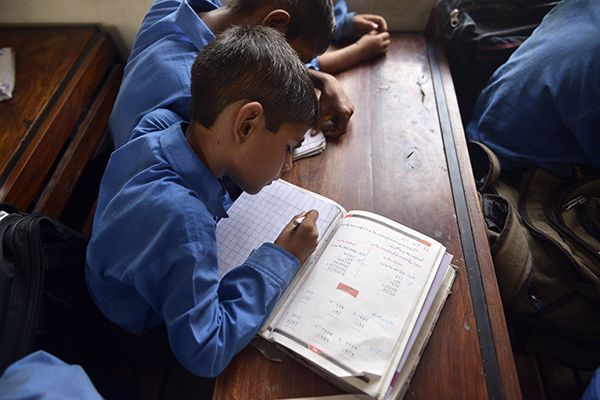
File photo. Arif Ali—AFP
A common refrain among Pakistanis is that the country will never be able overcome its education crisis, with only 40 percent of school-age children—roughly 20 million—actually attending any educational institutions. The crisis encompasses all educational tiers, including primary, secondary and tertiary. Additionally, nearly 20 million children attend public-sector schools or low-quality private schools, where learning standards are disgustingly low. The situation has stagnated Pakistan’s literacy rate at 59 percent, compared to India’s 78 and Bangladesh 75 percent. The World Economic Forum’s Global Human Capital Report 2017 ranked Pakistan 125 out of 130 countries in terms of education and skill development, with little chance of improvement in the intervening years as conditions have worsened. Any patriotic Pakistani would hang his head in shame over what this portends for the country’s future.
According to government figures, there are over 115,000 government-run schools operated by the federal and four provincial governments. However, their education standards remain abysmal due to bad governance and the state’s unwillingness to enact meaningful change. Distant federal and provincial capitals undertake almost all major decisions, while political appointments dominate the system and bureaucrats with no specialized training oversee matters. Parents who send their children to these schools have no say in the system and are often ignored if they voice any criticism. The poor conditions in far-flung areas also discourage qualified schoolteachers, concentrating the little quality in major urban centers.
To overcome the crisis, the state must strive to achieve national consensus among all political parties on an “education emergency,” prioritizing funding and focusing on improving learning outcomes. This would signify a critical commitment to elevate education as a national priority and would enable boosting education spending to at least 5 percent of GDP. If Pakistan is to survive as a state, it must educate its children properly. Article 25-A of the Constitution of Pakistan obligates the state to provide free and compulsory quality education to children aged between 5 and 16. Unfortunately, the state has consistently failed in achieving this.
